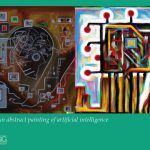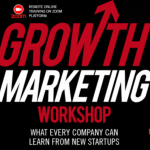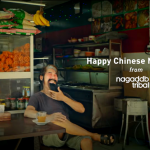“You won’t lose your job to AI, but you will lose your job to someone who knows AI.”
Though its origin evades me, this quote has stuck with me. As AI and its cousin – Generative AI (GAI) – become the fuel for today’s competitive business landscape, it won’t be about the big fish eating the small fish, but the fast fish eating the slow.
In a world where 12 months of technical progress can be made in a single weekend, the AI marathon feels more like a sprint. The rules are being written on the fly, and your fellow runners (or competitors) are a mix of seasoned veterans and eager newbies.
Welcome to the world of artificial intelligence: a dynamic, fast-paced discipline impacting how we do business and the way we work.
My journey into AI began with free online courses on platforms such as Coursera and LinkedIn Learning, which eventually led to a certification from MIT. What followed were plenty of experiments, failures, and messy successes.
In 2018, while consulting for a food retailer, we used AI to identify customer groups on social media using their loyalty data. We leveraged WatsonAI from IBM to match the best creative headlines with the segments most likely to respond.
This $40k investment resulted in an estimated $500,000 boost in in-store spending. Success.
In the same year, I put a fair whack of money into an insights AI business, which failed. Lesson learned: don’t build a business entirely reliant on another business – in my case – Facebook.
But I’m digressing.
To stay professionally competitive, you need to equip yourself with the proper knowledge and tools. But where do you start?
It’s a head-scratcher, as the answer depends on various factors like your learning goals, intended applications, and career aspirations.
My suggestion is a two-way approach:
Slow and steady: Begin with the fundamental building blocks. This means understanding the core concepts of AI literacy. And then move up as you get more interest in one area.
Experiment fast: Try tools like ChatGPT, Bard, PartyRock, DALL-E and Synthesia. Get to know them, and see where your imagination takes you.
This article provides a roadmap for that first step, the slow and steady approach, which forms the essential AI toolkit.
AI Basics: The Essential Toolkit
Before you start mining the vast reserves of AI potential, it’s crucial to understand the fundamentals. Here are six key terms that form the bedrock of AI literacy:
Machine Learning (ML): This type of AI allows systems to learn from data without being explicitly programmed. It’s like a child learning to recognise a dog by seeing pictures and real dogs.
Neural Networks (NNs): Inspired by the brain’s interconnected neurons, these algorithms learn by processing information through layers of interlinked units. Imagine a complex web of math that can recognise image patterns, translate languages, or even write poems.
Natural Language Processing (NLP). Teaching computers to understand and manipulate human language. It’s the magic behind chatbots answering your questions, translating languages in real-time, summarising lengthy documents, and reviewing resumes.
Computer Vision. It’s like giving computers eyes. CV algorithms analyse and interpret visual information from the real world, like self-driving cars recognising traffic signs or doctors identifying diseases from medical scans.
Reinforcement Learning (RL): Imagine teaching a dog with rewards and punishments. RL trains machines by trial and error, letting them learn through interactions and feedback.
Generative Adversarial Networks (GANs): Two neural networks in an intense competition. One creates the other critiques, pushing each other to generate increasingly realistic and creative outputs, like paintings indistinguishable from human art.
The information that feeds AI
You have probably heard of Large Language Models (LLM) and Small Language Models (SLM). LLMs are the supercars, and SLMs are the daily drive
LLM Imagine a giant brain that’s read every book, article, and code ever written. It’s super powerful, writing stories, translating languages, and even writing computer programs. It needs a lot of petrol (data) and an expensive garage and team (computer power) to run.
SML is an efficient little car, perfect for everyday errands. It’s trained on a smaller, hand-picked library of information. It’s not as powerful as LLM, but it costs less and can do more straightforward jobs, like finding information quickly.

Tools of the trade in Generative AI
Foundational models (FMs) are the powerhouses behind the recent popularity of generative AI. They’re like the engines that drive the cars.
Some of the most recognisable include:
LaMDA (Language Model for Dialogue Applications): Developed by Google AI
GPT-3 and 4 (Generative Pre-trained Transformer): Arguably the most well-known and widely used OpenAI model.
Stable Diffusion: Developed by RunwayML.
Infrastructure: The highway of AI
Picture a sleek, high-performance racecar, eager to break records and push the boundaries of speed. To realize its full potential, this vehicle needs a world-class track, a powerful engine, and a robust infrastructure to support its capabilities.
GPUs – the engines – are powerful, churning through complex calculations like pistons firing.
Cloud computing is like a network of strategically placed petrol stations along the road. These stations provide processing power on demand.
Now with 5G, the fifth generation of connectivity, imagine the same road but with added lanes.
The introduction of 5G is like building a multi-lane highway for AI. Latency drops, data flows faster, and the AI, like the fast car has less impediments to perform.
Understanding the infrastructure needs and dependencies gives you a holistic understanding of AI’s capabilities, limitations, and potential. By appreciating its limitations, you can make informed decisions on implementation and usage.
The AI landscape is rich with possibilities, but to truly capitalise on its potential, one must be well-equipped with knowledge and tools.
From understanding the basics to keeping abreast of emerging trends like multimodal AI, the journey is ongoing and requires continued learning.
While some people are disrupting the AI world, if you are not a data scientist or building a business entirely based on AI, learn the basics. AI adoption will divide the future: early adopters will soar, laggards will flounder.
The advice is simple. Learn and experiment.
Lucio Ribeiro is the Director of Marketing Digital and Innovation at the Seven Network. He is a pioneer in the field of artificial intelligence applied to marketing, advertising and business, Lucio is one of Australia’s most respected, awarded and innovative innovation executives. Having been elected one of the most influential online marketers in the world by Marketing Today, he is MIT certified in artificial intelligence.
MARKETING Magazine is not responsible for the content of external sites.









